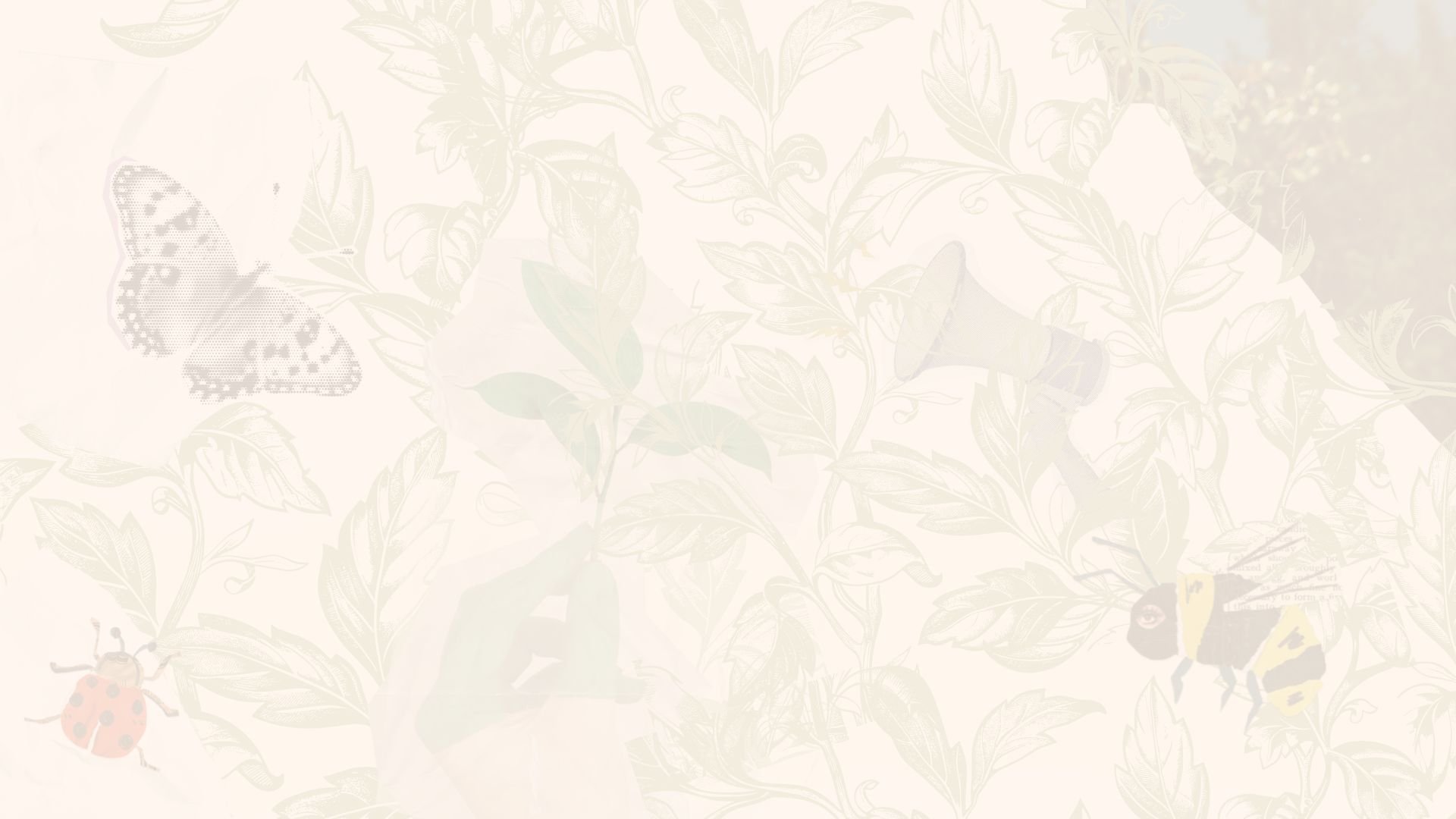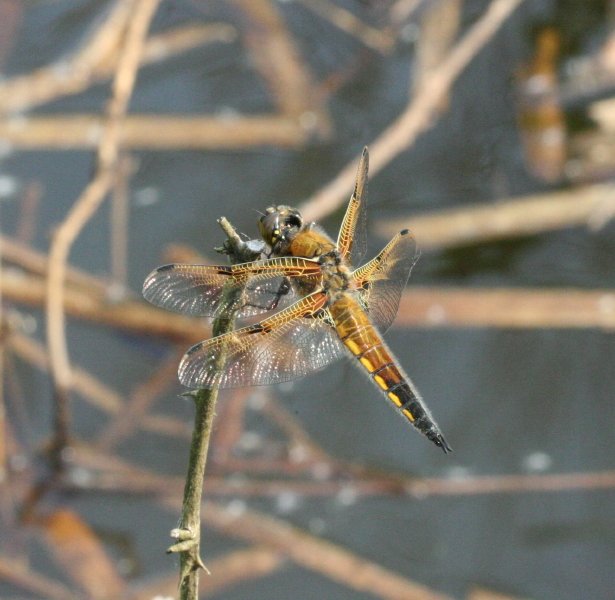
Island Species
There are almost 10,000 living species recorded on the Island’s Local Records Centre database, and as many as 15,000 identified by the specialist recorder network of the Isle of Wight. There are in addition 4,000 fossil taxa.
The Island’s flora and fauna are as notable for their absences as for their specialities, the consequence of biogeographical separation from mainland ecosystems over the past 5,500 years. The Island has a shorter list of breeding bird species than most counties, for example it has no (or very few) Tawny Owls, Nuthatches, Lesser-spotted Woodpeckers, or Marsh Tits (all well-established in the New Forest). Badgers did not persist once the Island separated, and it is likely that Foxes became extinct soon after. The only reason that we have these species here today is that both were repeatedly shipped onto the Island in the 19th and early 20th centuries for hunting62. There are no Mink (which is one of the reasons that Water Voles remain widespread)63, there are no Grey Squirrels (which is why Red Squirrels thrive here), and there are no wild deer (which is why Dormice are so widespread)64. This latter special characteristic of the Island’s natural environment is of particular importance, creating a pre-medieval woodland landscape, a time before deer were introduced, which is exceptionally rare in the UK. The absence of deer pressure on natural regeneration and new planting is beneficial to the ecology of small and fragmented Island woodlands when compared with mainland UK and is undoubtedly key to the survival of a woodland mammal assemblage unique in the UK and rare across Europe: Red Squirrel, Hazel Dormouse, Bechsteins and Barbastelle bats.
The Island’s rivers generally score relatively poorly for freshwater invertebrates65, again because of the effects of geographical isolation but also because of the continuing adjustment of stream ordering, channel morphology and sediment flows following the flooding of the Solent that separated the Island and turned its small tributaries and headwaters into main rivers. The Island is still quite new as a geomorphological and geographical entity.
The Island has a number of nationally and internationally important species. These include Wood Calamint (a flowering plant) and Reddish Buff (a moth), which are found nowhere else in the UK, and an extraordinary fungus, Bryostroma popei, parasitic on moss and new to science, found in ancient woodland at Briddlesford in 2019 is so far unknown anywhere else in the world. The English endemic plant Early Gentian, found only on chalk downland in the southern counties, has its largest population on the Island, in some years numbering in the hundreds of thousands. The Hemipteran plant bug Mocuellus collinus was known only from Island sand dunes in the UK (and named in standard field guides as ‘the Isle of Wight Hopper’) until being discovered in Chichester in 2024 perhaps suggesting a Solent population. One of the most surprising specialities in the Island’s impressive species list is the humble Dandelion. In reality this is a collection of over 250 microspecies25, many very rare and localised. The Island is considered to have the richest Dandelion flora in the UK, linked to the great diversity and combination of small-scale habitats and mosaics.
Perhaps the most spectacular concentrations of biodiversity are those inhabiting the Island’s coastal slopes and cliffs. These complex mosaics of sand, chalk, and clay, flushes, seeps, and pools, hot dry turf, and bare ground, constantly refreshed and reproduced by natural processes, support an exceptional invertebrate fauna. This includes the Glanville Fritillary (butterfly) and internationally significant populations of bees, wasps, flies and beetles, such as the Chestnut Click Beetle66 and the globally rare cranefly Dicranomyia lackschewitzi.
The western chalk cliffs still support a small seabird colony that includes Guillemot and Shag; a few pairs of Fulmar breed on the sandstone cliffs at Lake and Shanklin.
The Island’s intertidal and shallow marine environment is biologically rich, the result of its geological and hydrographic diversity, from the sheltered Solent estuaries to the extensive sandy beaches of Sandown Bay and the rock and reef habitats of the chalk and sandstone cliffs, from the low energy muddy shallows of the north coast to the wilder, high energy south coast with waves that have travelled for thousands of miles across open ocean. The biodiversity of the intertidal marine environment is also characterised by the Island’s geographical position on the Channel coast, acting as the easternmost point for species more common in Devon and Cornwall and a western outpost for species that extend from Kent to Sussex. The Island’s Solent coast connects ecologically with Eastern Dorset, Hampshire and West Sussex, together providing a total suite of habitats and resources needed by species such as Sanderling (wintering flocks) and 4 breeding terns, Sandwich, Common, Little and Roseate. Sandwich Tern is also increasing as a winter resident.
Species introductions and reintroductions are an active and current part of the Island’s conservation effort. White-tailed Sea Eagles are now well established and breeding in the Solent region as a result of the continuing work of the Roy Dennis Wildlife Foundation67 in partnership with Forestry England. The Hampshire and Isle of Wight Wildlife Trust is consulting with landowners in the Eastern Yar regarding the potential introduction of European Beaver and is actively involved in developing plans for White-clawed Crayfish and Chough.
It is important to stress that projects of this kind are closely regulated in law and are required to undergo a detailed environmental impact assessment in order to be granted a licence to proceed. The primary focus of the LNRS at this time is to recover and sustain the communities of flora and fauna already here, or very recently lost, and which define Island biogeography today, and to anticipate the ways in which global, national and local patterns of economic, climatic and environmental change may support, obstruct, accelerate or alter those conservation efforts. The future governance of LNRS work will accommodate and integrate the policy and practice of species introduction, and the matrix-with-mosaic approach to mapped measures allows for such initiatives.
The LNRS has identified a priority list of over 500 species divided into 14 assemblages that cover: Chalk, Acid Grassland and Heath, Lowland Meadow, Floodplain, Rivers, Bogs, Trees and Woodland, Urban, Maritime Soft Cliffs, Saltmarsh, Saline Lagoons, Dunes and Shingle, Beaches, Seafront and Seashores, and Farm Mosaic. These assemblages are applied to nature recovery priorities, as species-inclusive measures, targets for conservation management and as tools for longer-term project design, funding and monitoring. Within the 14 assemblages, there are some smaller species groupings of special importance. Some of these are focused on key larval foodplants, for example, the exceptional Red Data Book invertebrate assemblages associated with Island populations of Dyers Greenweed and Saw-wort, both components of the rare and Solent-distinctive meadow-heath communities. For the full priority species list, see Statement of Biodiversity Priorities - Part 3.
The success of the LNRS in achieving its stated objective of nature recovery depends upon a dual approach to the prioritisation, integration and location of projects and programmes of practical intervention. The first is habitat-led, focusing on the most vulnerable and depleted Island ecosystems and rebuilding lifecycle resources for assemblages of dependent species. The second approach is species-led, utilising the precise requirements of endangered Island species (and indeed those recently locally extinct) to bring to the surface an understanding not only of the necessary habitat quality to be achieved but also of the wider environmental, cultural, and socio-economic constraints on population viability.
The list of priority species, and the 14 habitat assemblages presented here are the result of 6 months of data collation and review, working with the IW Local Records Centre, the IW County Recorder network, amateur and professional experts in their fields, and through consultation with national recorder organizations such as the British Lichen Society, the British Mycological Society, the Dipterists Forum and the Marine Life Information Network.
The process of prioritisation has been led by statutory guidance and by local expertise, but it has also sought to recognise and properly consider the opinions and preferences expressed by the general Island public who have engaged with the LNRS process online, in forums and at public events throughout 2024 and 2025. What is evident or used as evidence is not just a matter of science and knowledge but also a matter of the way we see and approach things. This pragmatic approach has been adopted throughout the LNRS process, seeking to effectively balance stakeholder preference and opinion with biological records and landscape ecology.
The purpose of the species list is to refine the definition of priority habitat types by ensuring that different sub-types, communities and transitions are properly represented via key taxa, and that the range of measures proposed for nature recovery are comprehensive and fit for purpose.
The species lists provide two essential additional services to the LNRS. The first is as a monitoring tool, giving projects and programmes, and the LNRS process itself, a menu of indicators with which to chart progress through the first iteration of the strategy and begin to shape the next. The second is as a means of communication, a way of making real the technical ecological content of the strategy through the life of Island wildlife. To help with the latter, each assemblage has within it nominated ‘champions’ that can best carry the key messages about needs and requirements for the rest.
The final list comprises 491 priority species with 170 nominated as ‘Champions’ plus the Top 20.
Top 20
Cornflower
European Eel
European Stingray
Garden Tiger (moth)
Gilded Bolete (fungi)
Grayling (butterfly)
Grey partridge
Hazel Dormouse
House Sparrow
Oldrose Bolete (fungi)
Potter Flower Bee
Ringed plover (bird)
Satan's Bolete (fungi)
Short-snouted Seahorse
Stag beetle
Wall Butterfly
West European Hedgehog
Foxtail Stonewort (brackish water plant)
Long-snouted Seahorse
Papillose bog-moss


